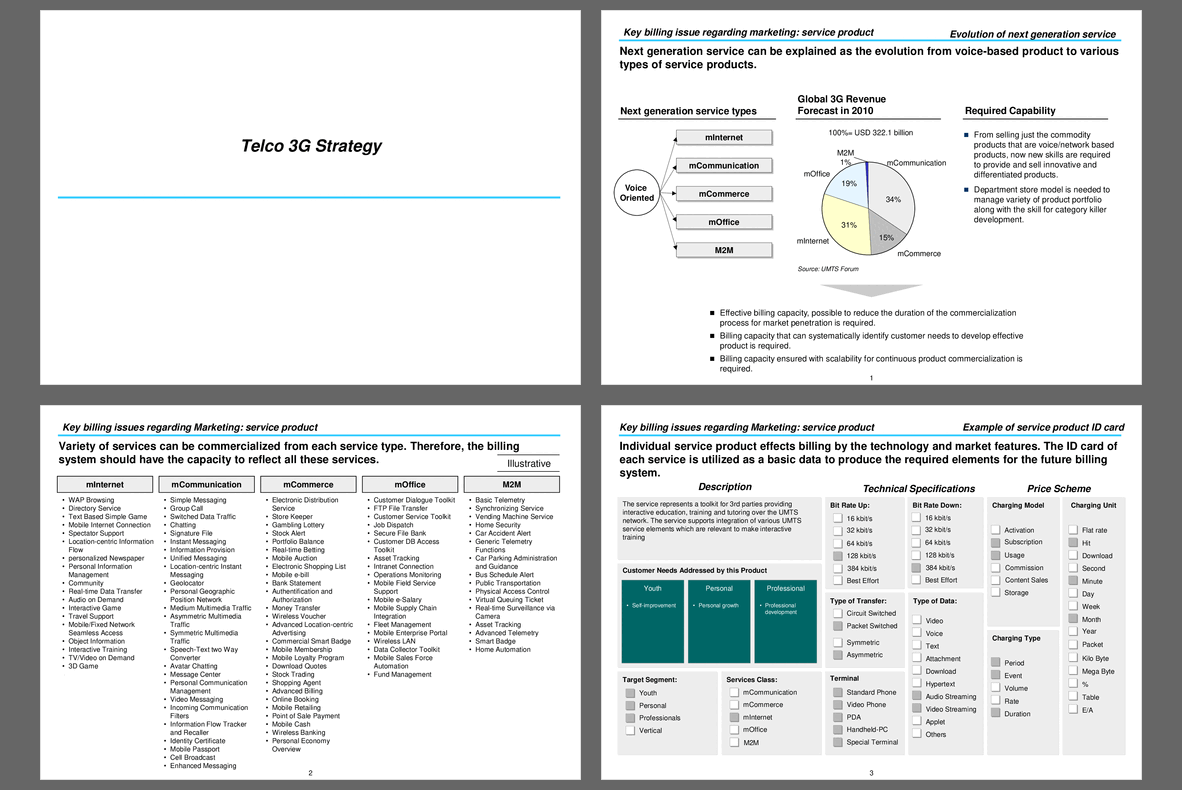







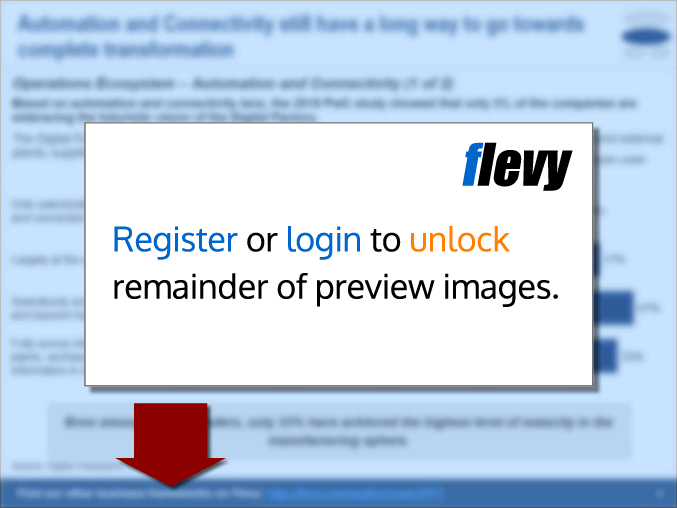








Please login here to save this document to a list.
If you don't have an account, you can register for free here.
Telco 3G Strategy Report (PowerPoint PPT Slide Deck)
PowerPoint (PPT) 157 Slides
DESCRIPTION
This is a report of a telecom company (sanitized) about its 3G strategy. The document outlined product strategy/product offerings, pricing plan, promotion channels and distribution channels/mix. It is a good reference for strategy development in a dynamic environment.
The Telco 3G Strategy Report delves into the intricacies of billing issues and marketing strategies for 3G services. It provides a comprehensive toolkit for third-party providers to integrate various UMTS service elements, addressing customer needs across youth, personal, and professional segments. The report meticulously categorizes service products by bit rate, type of data, and charging models, ensuring a thorough understanding of the technical specifications and pricing schemes.
The document also explores the value propositions of various wireless service products, emphasizing efficiency, time sensitivity, and convenience. It illustrates how mobile services can be tailored to meet diverse customer needs, from unified messaging and video telephony to mobile banking and personalized translators. The mCommerce service roadmap is particularly insightful, outlining the evolution of mobile commerce services and the integration of new technologies to enhance user trust and transaction value.
Pricing strategies are another focal point, with detailed discussions on usage-based and value-based pricing methods. The report highlights the importance of service differentiation and customer value perception in determining pricing schemes. It also provides examples of value-based pricing solutions, showcasing how individual user context management can optimize revenue streams and customer satisfaction.
The report also addresses the complexities of bundling products and services, offering a framework for creating effective bundles based on service type, charging type, and customer needs. It underscores the significance of flexible and speedy billing systems to accommodate the dynamic nature of next-generation services. The insights on customer interaction and electronic channel expansion further reinforce the need for continuous innovation in billing practices to enhance customer satisfaction and operational efficiency.
Got a question about the product? Email us at support@flevy.com or ask the author directly by using the "Ask the Author a Question" form. If you cannot view the preview above this document description, go here to view the large preview instead.
Source: Best Practices in Channel Distribution Strategy Example, Strategic Plan Example, Business Strategy Example, Strategy Development Example PowerPoint Slides: Telco 3G Strategy Report PowerPoint (PPT) Presentation Slide Deck, Documents & Files
PPT SLIDE DEEP DIVES
Integrated 3G Platform for Billing and Settlement

This PPT slide outlines a business model for a 3G platform, emphasizing the integration of mobile and web portals in the billing and settlement process. It highlights the importance of both mobile transport and fixed internet access in delivering services to end users. The model illustrates the flow of requests and fulfillment for digital content, digital services, and material goods, indicating how these elements interact within the platform.
At the center, the 3G platform acts as a hub, connecting mobile and web portals. The mobile portal is designed to facilitate requests and fulfillments, while the web portal serves a similar function, but with a distinct billing process. The slide notes that payments for services can occur through various channels, including subscriptions. This dual approach allows for flexibility in how users engage with content and services.
The aggregator plays a crucial role in this model, acting as an intermediary between the external providers—such as content providers, service providers, and e-merchants—and the platform. This relationship is essential for managing the flow of information and ensuring that the necessary content is available to users.
The business model description emphasizes that the operator's platform supports both wireless and wired portals, indicating a comprehensive approach to service delivery. The exclusive aggregator is highlighted as a key player responsible for content selection and formatting, which suggests a focus on quality and relevance in the offerings provided to end users. This model presents a structured way to manage interactions and transactions in a rapidly evolving digital landscape.
Dynamic Pricing Framework for Telecom Bundles
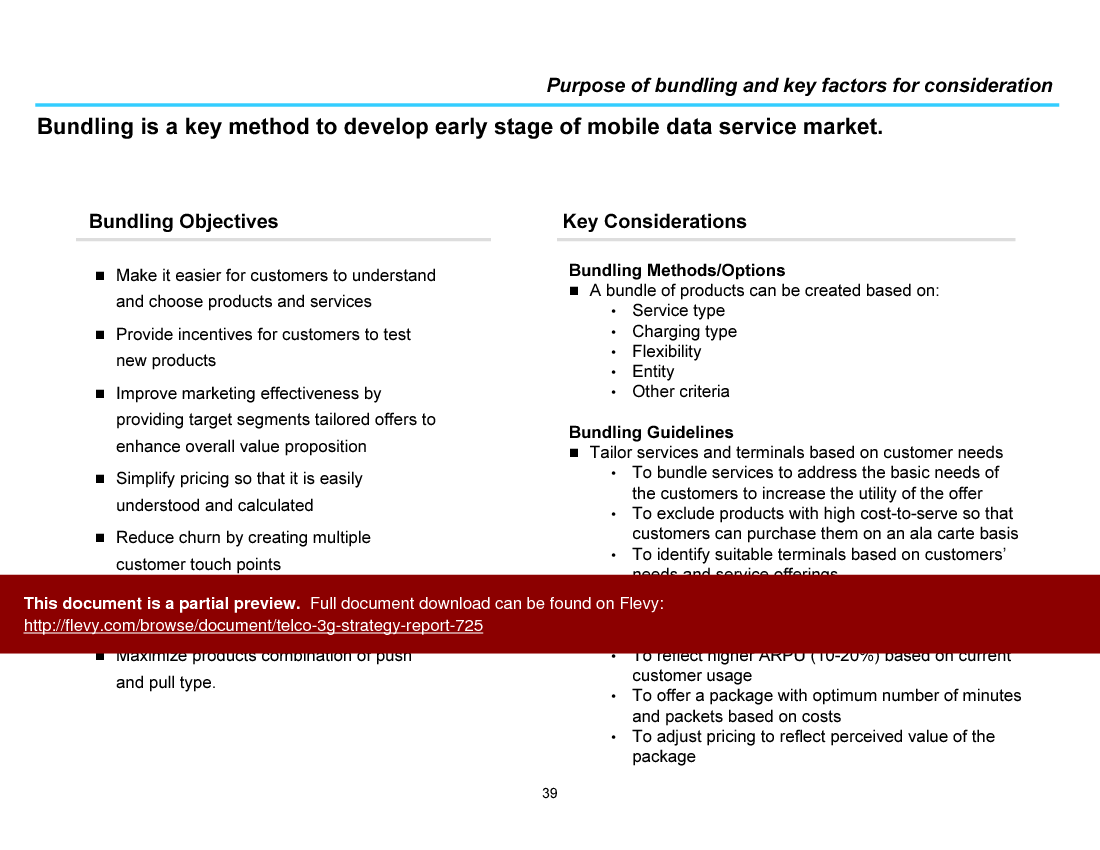
This PPT slide presents a decision-making framework for pricing bundles in a telecom context, focusing on the interplay of monthly fees, thresholds, and limits. It outlines eight distinct pricing options, structured as a flowchart that guides users through various scenarios based on customer usage and spending patterns.
Starting with the "Monthly Fee," the first decision point examines whether a threshold is met. If not, the pricing strategy is straightforward, offering a discount for bundled services. If the threshold is reached, the next decision involves whether a limit is applicable. If a limit is not set, customers may receive a free allowance upon exceeding the minimum threshold. Conversely, if a limit is imposed, discounts are contingent on surpassing that threshold.
The flowchart continues to explore different combinations of thresholds and limits. For instance, it suggests that a discount for a bundle could be activated only if a minimum threshold is exceeded. This threshold could be defined in terms of service volume or total expenditure on the bundle or specific services.
Further down the chart, additional options emerge, including the possibility of a monthly subscription requirement for discounts and the application of standard rates after allowance limits are reached. The structure emphasizes flexibility in pricing strategies, allowing telecom providers to tailor their offerings based on customer behavior and preferences.
This slide is essential for decision-makers looking to refine their pricing strategies, as it provides a clear visual representation of how various pricing elements interact. Understanding these options can lead to more effective bundling strategies that align with customer needs while optimizing revenue.
Strategic Approaches to Wireless LAN Integration
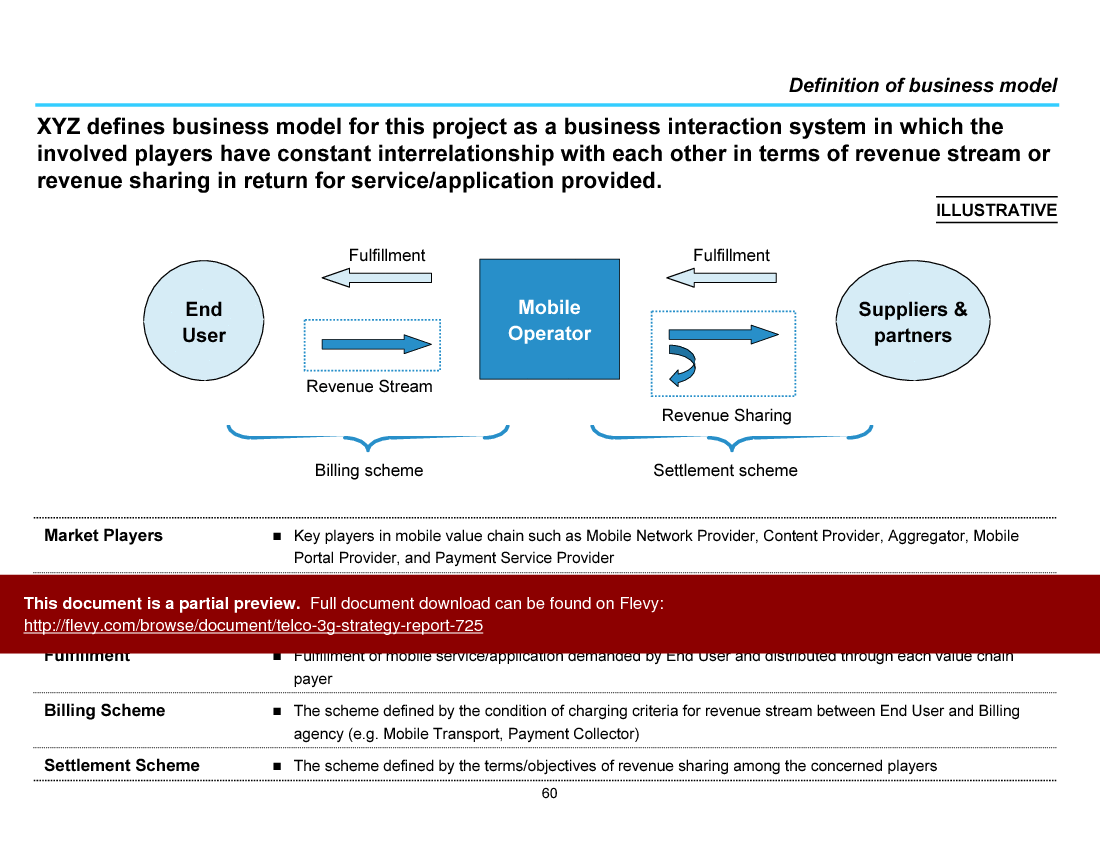
This PPT slide outlines the strategic initiatives of mobile communication providers in Europe as they venture into the wireless LAN business. It highlights the various approaches being adopted by key players like Ericsson and Telenor Mobil to integrate wireless LAN services into their existing frameworks.
Ericsson is focusing on 3 main strategies. First, it aims to merge mobile enterprise communication systems with 3G technology to enhance private business networks. Second, it is promoting wireless LAN services in public areas, specifically through the HiperLAN/2 standard. Lastly, the introduction of Bluetooth technology is intended to facilitate connections within personal area networks (PAN), broadening the scope of wireless services.
Telenor Mobil is also making strides in this area, targeting new markets by developing integrated solutions that leverage the HiperLAN/2 and 3G networks. This dual approach is essential for expanding their market reach and enhancing service offerings.
The slide further discusses the operational aspects of providing wireless LAN services. It emphasizes the need for effective billing systems that can differentiate between mobile and wireless LAN usage. This includes the installation of access points in high-traffic areas and the provision of IP addresses through a separate subscription process. Integrated billing is crucial for seamless service delivery.
Challenges are noted regarding the operator billing system, particularly in classifying and integrating fees based on user activity across different network types. The slide suggests that future billing models should accommodate various pricing structures, including monthly rates and usage-based charges, to enhance customer satisfaction and operational efficiency.
Strategic Business Models for Mobile Operators
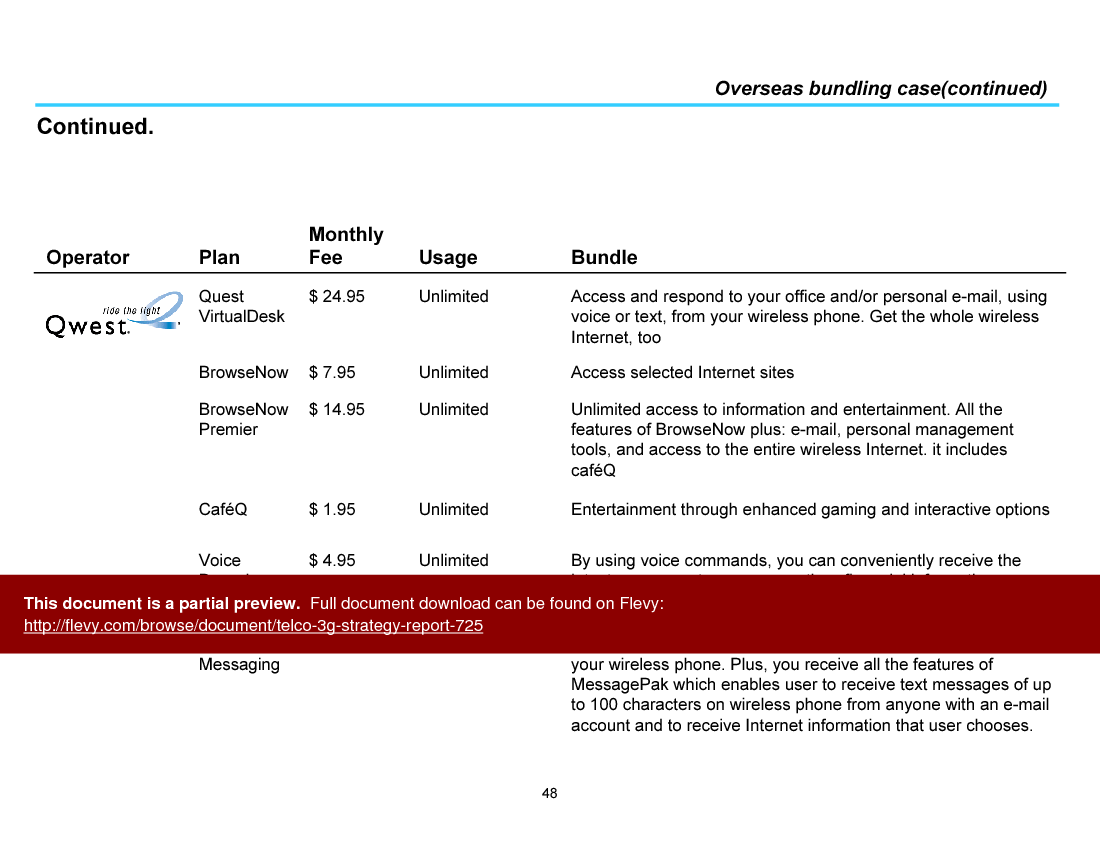
This PPT slide outlines various business models that mobile operators can adopt as they transition to next-generation services. It categorizes these models into 2 main segments: Business-to-Consumer (B2C) and Business-to-Business (B2B). Each model is briefly described, highlighting the operator's role and responsibilities.
In the B2C segment, the "Access & Transport Provider" model positions the operator primarily as a conduit for services, relying on third-party aggregators for content management. The "Content & Service Aggregator" model suggests a more integrated approach, where the operator not only provides access, but also curates and packages content from various sources. The "Full mCommerce Player" emphasizes the operator's role in managing transactions, offering a unified billing process. The "Payment Collector" model focuses on the operator's function as an intermediary for payments between external providers and end users.
The B2B segment introduces the "Mobile Office Enabler," which centers on empowering businesses to leverage mobile networks for workforce mobilization. Finally, the "Marketplace Enabler" model indicates that operators can facilitate B2B transactions, acting as a platform for businesses to engage with each other.
This structured approach to business models illustrates the evolving role of mobile operators in the digital ecosystem. It suggests that operators must adapt their strategies to capture value across different market segments. Understanding these models can help potential customers identify opportunities for collaboration and innovation within their own business frameworks. The implications for revenue sharing and market dynamics are significant, making this slide a valuable resource for stakeholders considering strategic partnerships or investments in mobile services.
Implications of B2C Business Models on Revenue and Billing
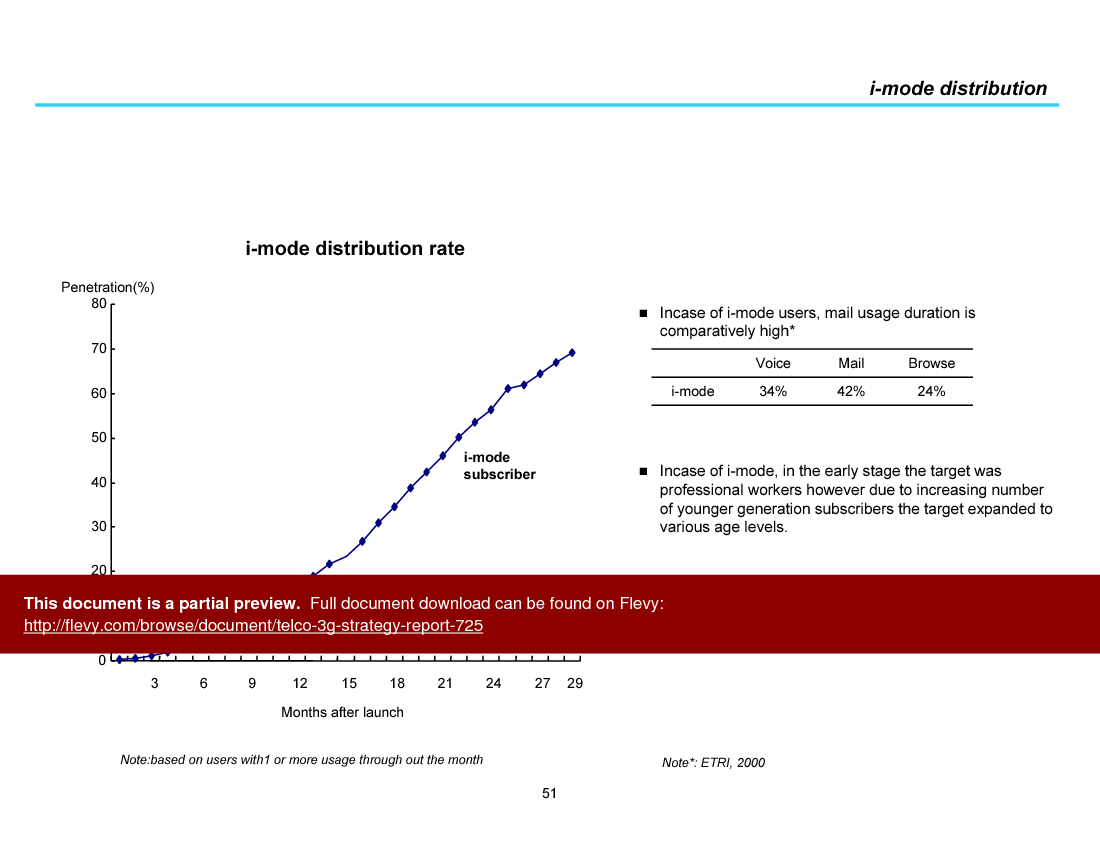
This PPT slide outlines various B2C business models and their implications regarding revenue potential, required capabilities, and billing/settlement processes. It categorizes these models into 4 distinct types: Access & Transport Provider, Content & Service Aggregator, Full mCommerce Player, and Payment Collector. Each model has unique characteristics that influence how revenue is generated and how billing is managed.
For the Access & Transport Provider Model, revenue is primarily derived from access and transport fees based on network usage. The required capability focuses on operating and selling mobile network access, along with basic billing functions. The implication for billing and settlement indicates that revenue sharing does not occur, as billing is strictly tied to network usage.
The Content & Service Aggregator Model expands on this by incorporating sales charges for content and service provisioning. This model requires additional capabilities, such as the ability to aggregate content and manage various billing types. Here, billing is more complex, as it encompasses both network usage and content sales, establishing a more intricate settlement relationship.
The Full mCommerce Player Model further broadens the scope by allowing the sale of tangible assets and services directly or through partnerships. This model necessitates capabilities from both previous models and introduces additional complexities in billing, as it involves transactions related to mCommerce and various content types.
Lastly, the Payment Collector Model offers flexibility in billing, allowing for optional access and transport fees. It emphasizes the capability to provide settlement services for mCommerce transactions, which adds another layer of complexity to the billing process. Each model presents distinct operational requirements and revenue implications that potential customers should consider when evaluating their strategic options.
Future Growth and Technical Aspects of Global Roaming
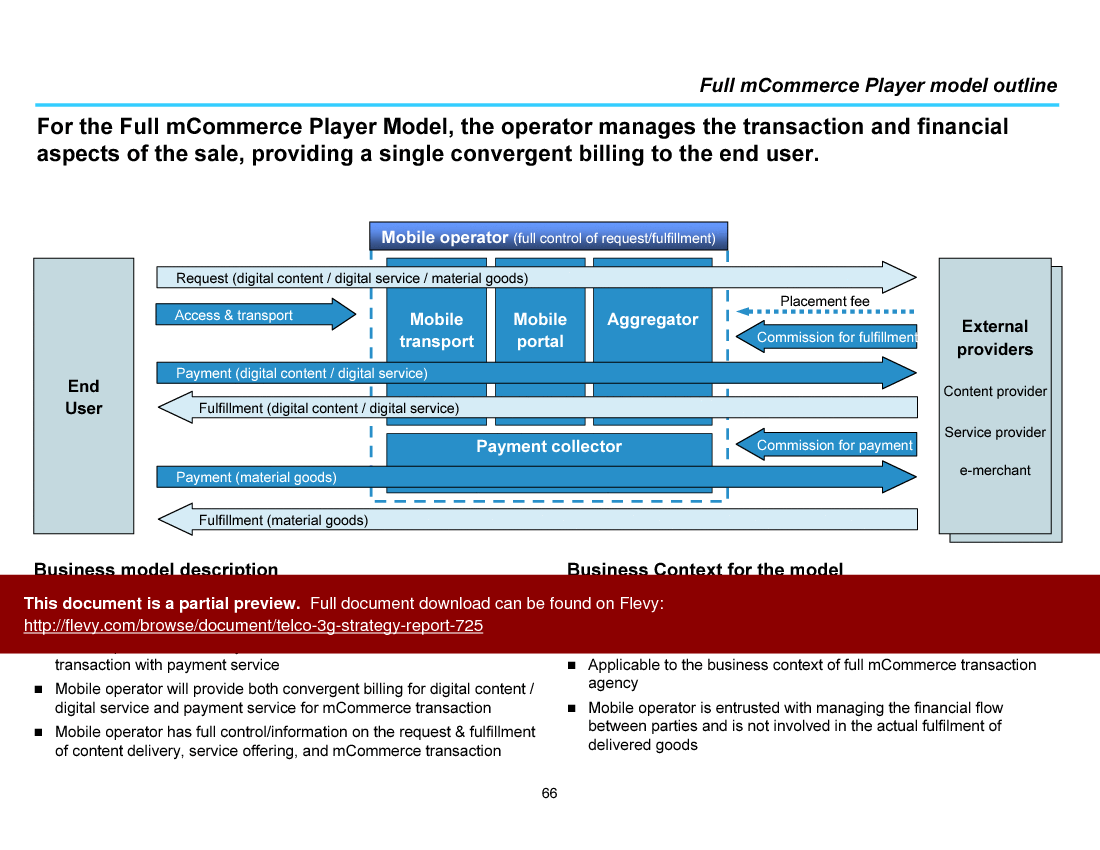
This PPT slide outlines the anticipated growth in revenue from global roaming services, particularly as networks evolve to IMT-2000 standards. It begins by stating that the roaming revenue from GSM operators in foreign markets is projected to exceed 10% of total revenue on average by 2002. This indicates a significant reliance on roaming services for revenue generation in the telecom sector.
SWISSCOM's contribution to roaming revenue is highlighted, accounting for 22.2% in 2002. This figure underscores the importance of roaming services for major telecom players. Furthermore, the slide notes an annual growth rate exceeding 5% for global roaming revenue among telecom companies in Western Europe, suggesting a robust upward trend in this market segment.
The slide also delves into the technical aspects of automatic roaming between GSM and other network standards, such as WCDMA. It categorizes the different stages of automatic roaming, including GSM Plastic Roaming, GSM Automatic Roaming, and Inter-generation Roaming. This classification reflects the complexities and considerations involved in facilitating seamless connectivity across various network generations.
Additionally, it mentions the potential for telecom carriers to enhance roaming services through the use of R-UIM (Removable User Identity Module), allowing users to access GSM networks in regions where roaming agreements exist. This adaptability is crucial for maintaining service continuity for users traveling internationally.
Overall, the slide presents a clear picture of the evolving global roaming market, emphasizing the financial implications and the technological advancements necessary to support this growth. Companies looking to capitalize on these trends should consider the strategic importance of enhancing their roaming capabilities.
Evolution of Telecommunications Service Products

This PPT slide presents an analysis of the evolution of service products in the telecommunications sector, particularly focusing on next-generation services. It categorizes these services into various types, including mInternet, mCommunication, mCommerce, mOffice, and M2M (Machine to Machine), all stemming from traditional voice-oriented services. This classification highlights the shift from basic voice services to more complex, data-driven offerings.
The pie chart on the right illustrates the projected global revenue distribution for 3G services in 2010, amounting to USD 322.1 billion. Each segment represents a different service type, with mInternet expected to capture the largest share at 34%, followed by mCommunication at 31%, and mCommerce at 15%. M2M and mOffice represent smaller portions, indicating emerging, but less dominant roles in the market.
The slide emphasizes the need for enhanced billing capabilities to support this transition. It suggests that effective billing systems can expedite market penetration by streamlining the commercialization process. Furthermore, it points out that telecom companies must develop new skills to market and sell these innovative products effectively. The mention of a "department store model" indicates a strategic approach to managing a diverse product portfolio, which requires a focus on category management to thrive in this evolving landscape.
Overall, the content underscores the necessity for telecom firms to adapt their strategies and operational capabilities to successfully navigate the shift from voice-centric to multifaceted service offerings.
Dynamic Pricing Strategies for Telecom Services
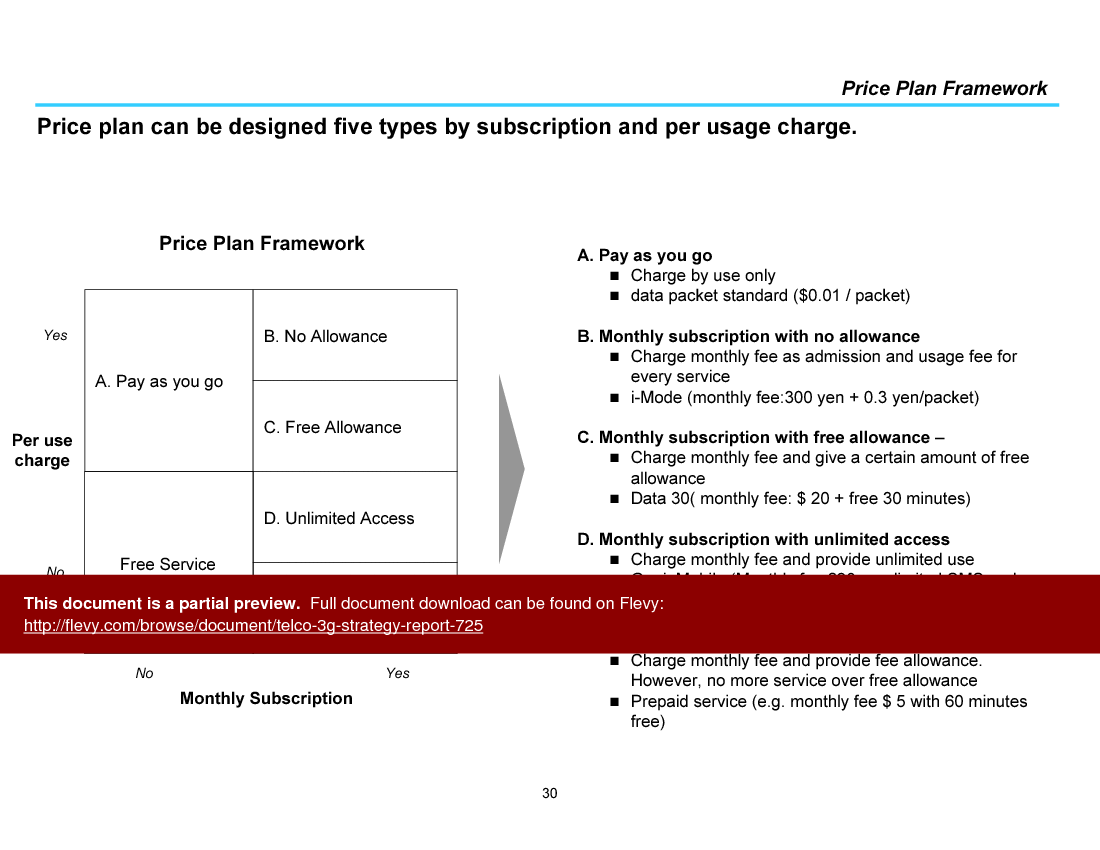
This PPT slide outlines various pricing schemes that could serve as a strategic advantage for a new service in the telecommunications sector. It categorizes the pricing structure into 3 primary components: Charging Model, Charging Type, and Charging Unit, with an additional focus on Premium/Discount Schemes.
Under the Charging Model, 4 distinct approaches are identified: Activation, Subscription, Usage, and Commission. Each of these models caters to different customer needs and usage patterns, suggesting a tailored approach to pricing.
The Charging Type further breaks down into Event, Duration, and Period, indicating how charges might be applied based on specific actions or timeframes. For instance, Event-based charges could be tied to individual actions like downloads or uploads, while Duration might focus on time spent using the service.
The Charging Unit section specifies the metrics for billing, including flat rates, hits, and data volume measured in KB or MB. This granularity allows for precise billing aligned with customer usage, enhancing transparency and potentially customer satisfaction.
The Premium/Discount Scheme highlights various factors that could influence pricing, such as time, location, and customer group. This flexibility in pricing strategies is essential for adapting to market demands and customer expectations.
The slide emphasizes the necessity for a robust billing system capable of accommodating these diverse pricing models and types. It suggests that individual services might employ multiple charging models simultaneously, underscoring the need for a flexible and comprehensive approach to pricing strategy in the telecom industry. This insight is crucial for decision-makers considering the implementation of new services.
Market Dynamics and Features of Wireless LAN

This PPT slide outlines the unique characteristics and market dynamics of the Wireless LAN sector. It emphasizes the transition from a vertical to a horizontal market, indicating a broader scope that integrates Personal Area Networks (PAN) and Wide Area Networks (WAN). This shift suggests a more comprehensive approach to wireless infrastructure.
Key features highlighted include mobility, flexibility, cost reduction, and scalability. Mobility allows users to connect from various locations within a defined scope, enhancing user convenience. Flexibility points to the ability to structure networks without physical constraints, which is crucial for adapting to changing business needs. Cost reduction is noted as a long-term advantage, particularly when considering the mobility and evolving requirements of users. Scalability is emphasized as well, indicating that the system can accommodate various configurations and is easy to expand based on user demand.
The slide also discusses the current development direction of the domestic Wireless LAN market. It mentions that the market is growing among diverse user groups, including general businesses, small office/home office (SOHO) setups, families, and educational institutions. Despite this growth, it notes that existing wired LAN environments cannot fully transition to wireless, highlighting a gap in the market. There is a significant demand for wireless environments in specific venues like training centers and hotels, suggesting opportunities for service providers.
Overall, the slide presents a clear picture of the Wireless LAN market's potential and the strategic considerations for stakeholders looking to invest or expand in this area.
Revenue Models for Service-Based Offerings

This PPT slide outlines a framework for understanding various revenue-generating models applicable to services provided to end users. It emphasizes the importance of a well-structured charging model, which not only clarifies how revenue is generated, but also enhances customer acceptance of pricing. The text suggests that customers must grasp the benefits they receive from a service, indicating that effective communication of value is crucial.
The slide categorizes different charging models, each with a brief description. The first category, Activation/Admission, refers to fees associated with the initial activation of a service, which is a one-time charge. The Subscription model follows, where users pay for the right to access a service over a defined period, allowing for multiple uses during that time. This model can create a steady revenue stream.
Next is the Usage model, which charges customers for each individual use of a service. This approach can be effective for services that are not used regularly. The Commission model is also presented, where fees are collected for facilitating transactions or sales, highlighting a performance-based revenue approach.
Content Sales are mentioned as a model where value is derived from selling virtual or physical goods. Lastly, the Storage category refers to fees for providing data storage solutions, which is increasingly relevant in the digital age.
Overall, the slide serves as a guide for executives to consider various revenue models and their implications for customer engagement and pricing strategies.
Transforming Mobile Value Chain for New Opportunities

This PPT slide outlines the evolving value chain within the mobile industry, emphasizing the new business opportunities that arise for mobile operators. It suggests that operators must adapt their business models to effectively leverage these opportunities. The structure is divided into key segments: Content, Network, and Retail, each representing critical components of the value chain.
Under the Content section, the focus is on the creation and aggregation of services. This includes developing content for both corporate and consumer markets, as well as transaction services that facilitate user engagement. The Content & Services Aggregation subsection highlights the importance of context provision and corporate intranets, indicating a shift towards personalized and integrated service offerings.
The Mobile Network segment addresses the physical infrastructure necessary for connectivity, including virtual mobile networks and location-based data services. This suggests that operators need to invest in robust network capabilities to support the increasing demand for data and connectivity.
The Hardware & Software Platforms section emphasizes the technical components that underpin mobile services, such as security applications and payment solutions. This indicates a growing need for operators to ensure that their platforms are secure and capable of supporting various applications.
Handsets & Appliances cover the devices that consumers use, including mobile phones and other wireless terminals. This section also touches on navigation and operating systems, which are essential for enhancing user experience.
Distribution & Retail focuses on the channels through which services are delivered, including points of sale and customer acquisition strategies. The end-user segment highlights the diverse customer base, ranging from individual consumers to corporate users and machines, underscoring the necessity for operators to tailor their offerings to different market segments.
Telecom Technology Performance and Application Ratings

This PPT slide presents a detailed analysis of various telecommunications technologies and their corresponding performance metrics. It categorizes technologies into 3 main groups: 3G, 2.5G, and 2G. Each category is associated with specific data transmission rates measured in kilobits per second (kbps), ranging from 9.6 to 2000 kbps.
The first section outlines the technologies, including CDMA/3XRTT, Edge, GPRS/1XRTT, and HSCDS/IS - 95B. The graphical representation of technology transmit speed capability highlights the significant differences in performance among these technologies. This visual cue emphasizes the advancements in speed that 3G technologies offer compared to their predecessors.
The second section evaluates various applications, such as transaction processing, messaging, location services, and video streaming, against the performance ratings provided for each technology. The ratings are represented by filled circles, indicating the effectiveness of each application at different data rates. For instance, transaction processing and messaging receive high performance ratings across most technologies, while high-quality video shows limited performance, particularly at lower data rates.
This slide effectively illustrates the relationship between technology capabilities and application performance, providing insights into how advancements in telecommunications can enhance service offerings. It serves as a critical reference for decision-makers considering investments in technology that can support advanced services and improve customer experiences.
Adapting Billing Practices to Evolving Customer Expectations

This PPT slide illustrates the evolving expectations of customers regarding billing in the telecommunications sector. It emphasizes that customer desires, which are currently unmet, are transitioning into fundamental expectations as service offerings develop. The core message is that if customer expectations are not met or decline, maintaining satisfactory outcomes becomes increasingly challenging. Conversely, as expectations rise, the billing processes must also adapt and improve.
The slide is structured around a matrix that categorizes customer expectations into 3 levels: unanticipated, expected, and basic. The unanticipated expectations represent complex and varied service and pricing schemes that customers may not currently expect, but will likely demand in the future. The expected level includes customization, immediate responses, and accurate, detailed information. Basic expectations encompass straightforward billing practices, such as clear discount specifications and easily understandable pricing.
The text suggests that many customers express concerns about the reliability of billing information, indicating a gap that needs addressing. It highlights that competing operators are enhancing their billing services, which raises the stakes for companies that fail to keep pace. The slide calls attention to the necessity for organizations to not only meet current expectations, but also anticipate future demands to avoid falling behind.
This analysis indicates that businesses must prioritize improving their billing processes to align with rising customer expectations. Failing to do so could result in dissatisfaction and potential loss of customers. The insights provided here are crucial for any organization looking to enhance customer satisfaction and loyalty in a competitive environment.
Framework for Service Bundling Customization Strategies
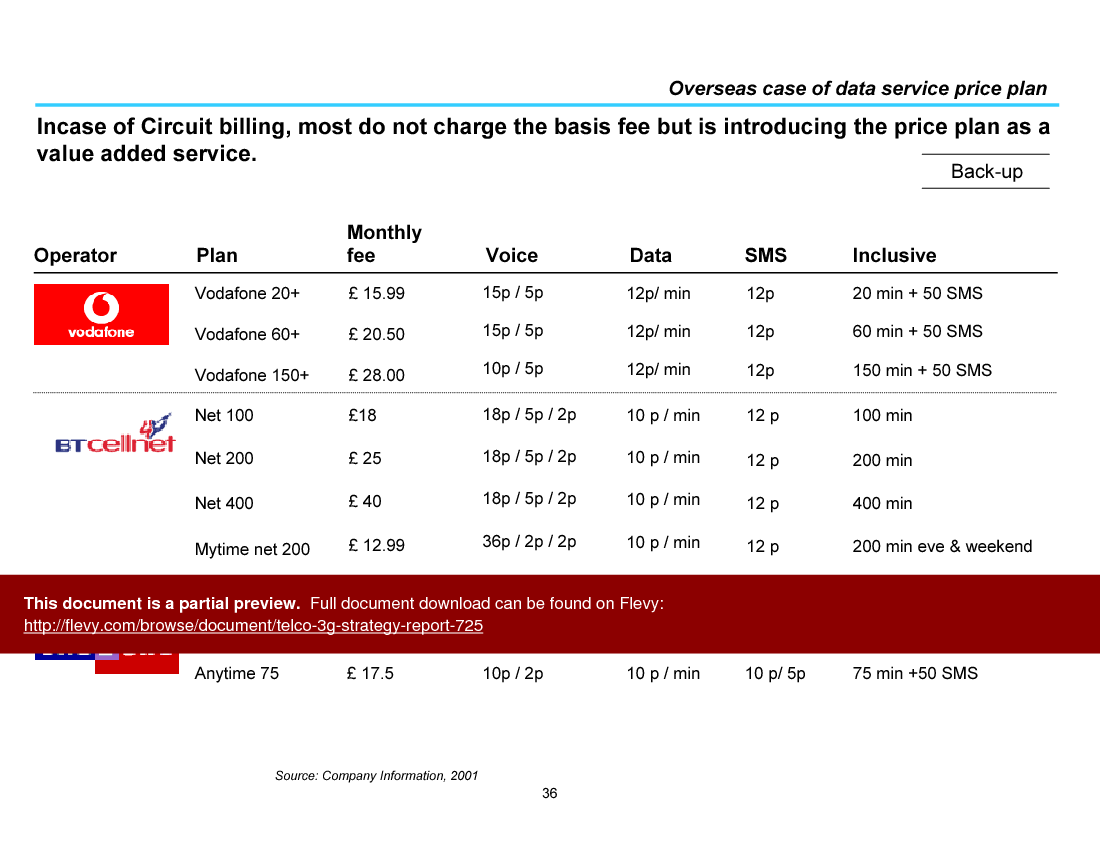
This PPT slide presents a framework for bundling services in a telecommunications context, emphasizing the varying levels of customization available to customers. It categorizes bundling into 3 distinct types: Fixed Bundling, Semi-Customized Bundling, and Full Customized Bundling, arranged along a spectrum from low to high customization.
Fixed Bundling offers a limited selection of services, primarily based on customer segmentation. This approach is straightforward and easy for customers to understand, making it a practical choice for those who prefer simplicity. It likely appeals to customers who value clarity and ease of communication.
The Semi-Customized Bundling option allows customers to select multiple services from a predefined pool. This model is likened to purchasing tickets at an amusement park, where customers can choose a combination of experiences. This flexibility may attract customers looking for a bit more choice without overwhelming complexity.
Full Customized Bundling presents the highest level of personalization, granting customers complete freedom to select services and set pricing for their bundles. However, this model introduces potential confusion, as customers might struggle to ascertain the actual savings compared to purchasing services individually. The slide notes that recommendations for bundling should be informed by customer usage behavior, suggesting a data-driven approach to enhance customer satisfaction and optimize offerings.
Overall, this framework highlights the importance of balancing simplicity and customization in service bundling. Understanding these options can help organizations tailor their offerings to meet diverse customer needs while navigating the complexities of pricing and service selection.
Customer-Centric Pricing Strategies for Content

This PPT slide outlines a pricing strategy focused on customer perception and context, categorized into 3 distinct approaches: single pricing, differentiated pricing, and context-based pricing.
In the single pricing section, it emphasizes a uniform price for all content, illustrated by the example of a "bell download" service priced at $1.80. This approach does not account for customer preferences or the specific type of content, suggesting a potential disconnect between pricing and perceived value.
The differentiated pricing segment introduces the concept of tailoring prices based on market demand and customer perceived value. It provides examples of varied pricing for different types of songs, such as the latest song priced at $3.00, popular songs at $2.00, and oldies at $0.50. This strategy aims to align pricing more closely with what customers are willing to pay for specific content, thereby enhancing revenue potential.
The context-based pricing section takes this a step further by advocating for real-time customization of content pricing based on various contextual factors. It highlights elements like usage location, urgency, and individual preferences as critical components that influence demand. The diagram illustrates how these factors interconnect, suggesting that understanding the context can lead to more effective pricing strategies.
Overall, the slide presents a framework for evolving pricing strategies that prioritize customer insights and contextual factors, aiming to maximize profitability while enhancing customer satisfaction. This approach may appeal to organizations looking to refine their pricing models to better align with consumer behavior and preferences.
mCommerce Service Evolution and Strategic Roadmap

This PPT slide presents a structured roadmap for mCommerce services, illustrating the evolution of mobile commerce offerings. It categorizes various service levels based on their complexity and user trust, ranging from simple transactions to more complex interactions. The vertical axis indicates the "Usage & Trust Level," with categories such as "mCash Enabled Simple, but High Value Transaction" at the top, suggesting a higher level of user confidence and engagement.
The horizontal axis outlines a progression of services, starting from basic functionalities like "Bank Statement" and "Money Transfer" to advanced offerings such as "Mobile Loyalty Program" and "Commercial Smart Badge." This progression reflects a strategic intent to enhance user experience and expand service capabilities over time. Each service is interconnected, indicating potential pathways for user engagement and transaction flow.
The roadmap also highlights the importance of technology development, with sections dedicated to new technologies and adaptations of existing applications. This suggests a focus on innovation and responsiveness to market demands. The inclusion of services like "Advanced Location-centric Advertising" and "Mobile Membership" points to a trend towards personalized and location-based offerings, which are increasingly relevant in today's digital landscape.
Overall, the slide serves as a comprehensive overview for stakeholders considering investments in mCommerce, showcasing a clear vision for service evolution and user engagement. It emphasizes the need for continuous adaptation and innovation to meet the evolving needs of consumers in the mobile commerce space.
Comprehensive Overview of Telecom Service Offerings

This PPT slide presents a comprehensive overview of various services that can be commercialized across different categories within the telecommunications sector. It emphasizes the necessity for a billing system capable of reflecting the diverse offerings associated with each service type. The content is organized into 5 distinct columns, each representing a specific service category: mInternet, mCommunication, mCommerce, mOffice, and M2M (Machine to Machine).
In the mInternet section, services like WAP browsing and directory services are highlighted, indicating a focus on mobile internet connectivity and user engagement. The mCommunication category outlines messaging services, including instant messaging and video messaging, which are essential for real-time communication among users.
The mCommerce section showcases a variety of transactional services such as electronic shopping and mobile banking, underscoring the growing trend of mobile commerce. This reflects a shift towards integrating financial transactions within mobile platforms, which is crucial for customer convenience.
Moving to mOffice, the slide lists tools that enhance business operations, such as customer dialogue toolkits and asset tracking. These services cater to organizational needs, emphasizing efficiency and improved customer interaction. Lastly, the M2M category introduces services related to automation and telemetry, indicating a focus on smart technologies and real-time data management.
Overall, the slide effectively communicates the breadth of services available in the telecom industry and the importance of a flexible billing system to accommodate these offerings. This insight is vital for stakeholders looking to understand how to optimize service delivery and enhance customer satisfaction.
Billing and Settlement Challenges in Wire/Wireless Integration

This PPT slide outlines various billing and settlement issues related to the integration of wire and wireless services. It presents a structured view of specific billing challenges, their descriptions, and implications for billing and settlement requirements.
The first issue focuses on the Operator Mobile Network combined with an affiliated fixed portal. Here, the affiliated portal is responsible for content delivery and eCommerce transactions, utilizing its own billing infrastructure. This indicates that the Operator will not be involved in the billing process, which could lead to operational complexities if not managed properly.
Next, the slide discusses the third-party fixed portal, which also provides content delivery and eCommerce services. This portal will primarily cater to a large email subscriber base, suggesting that the Operator must ensure seamless integration of billing processes across different platforms to maintain customer satisfaction.
The third issue highlights the mobile content provided through the Operator's own site, emphasizing the need for web authorization processes for billing. This suggests a potential gap in user experience if the integration isn't smooth.
The slide also touches on the reselling issue in fixed-mobile convergence. The Operator can offer payment services to third-party portals, indicating a revenue-sharing model. This could be a significant opportunity for additional income streams.
Lastly, the portal site open-related issue indicates that the Operator can still leverage revenue opportunities through payment services. This suggests that even in a competitive environment, there are avenues for the Operator to maintain profitability.
Overall, the slide provides a comprehensive overview of the billing challenges and opportunities that arise from integrating wire and wireless services, emphasizing the need for strategic planning in billing processes.
Service Product Overview and Billing Implications

This PPT slide presents a comprehensive overview of a service product related to telecommunications, specifically focusing on its implications for billing and market features. The primary aim is to illustrate how individual service offerings influence billing systems, with the ID card serving as a foundational tool for future billing requirements.
The "Description" section outlines the service as a toolkit for third parties engaged in interactive education, training, and tutoring over the UMTS network. It emphasizes the integration of various service elements that enhance interactive training capabilities. This suggests a targeted approach to meet specific educational needs.
The "Customer Needs Addressed by this Product" section categorizes the target audience into 3 segments: Youth, Personal, and Professional. Each category highlights distinct needs, such as self-improvement for youth, personal growth for individuals, and professional development for professionals. This segmentation indicates a tailored marketing strategy aimed at addressing diverse customer aspirations.
Technical specifications are detailed in the subsequent sections, providing insights into bit rates, types of transfer, and data types. The bit rates range from 16 kbit/s to 384 kbit/s, indicating flexibility in service offerings. The types of transfer include circuit and packet switching, which are crucial for understanding the underlying technology. The data types listed suggest a broad applicability, catering to various user needs.
Finally, the "Price Scheme" outlines different charging models and units, such as activation, subscription, and flat rates. This section is critical for potential customers to grasp the financial implications of adopting this service. Overall, the slide effectively communicates the multifaceted nature of the service product, making it a valuable resource for decision-makers in the telecommunications sector.
Maximizing Market Outcomes through Customer Engagement Strategies
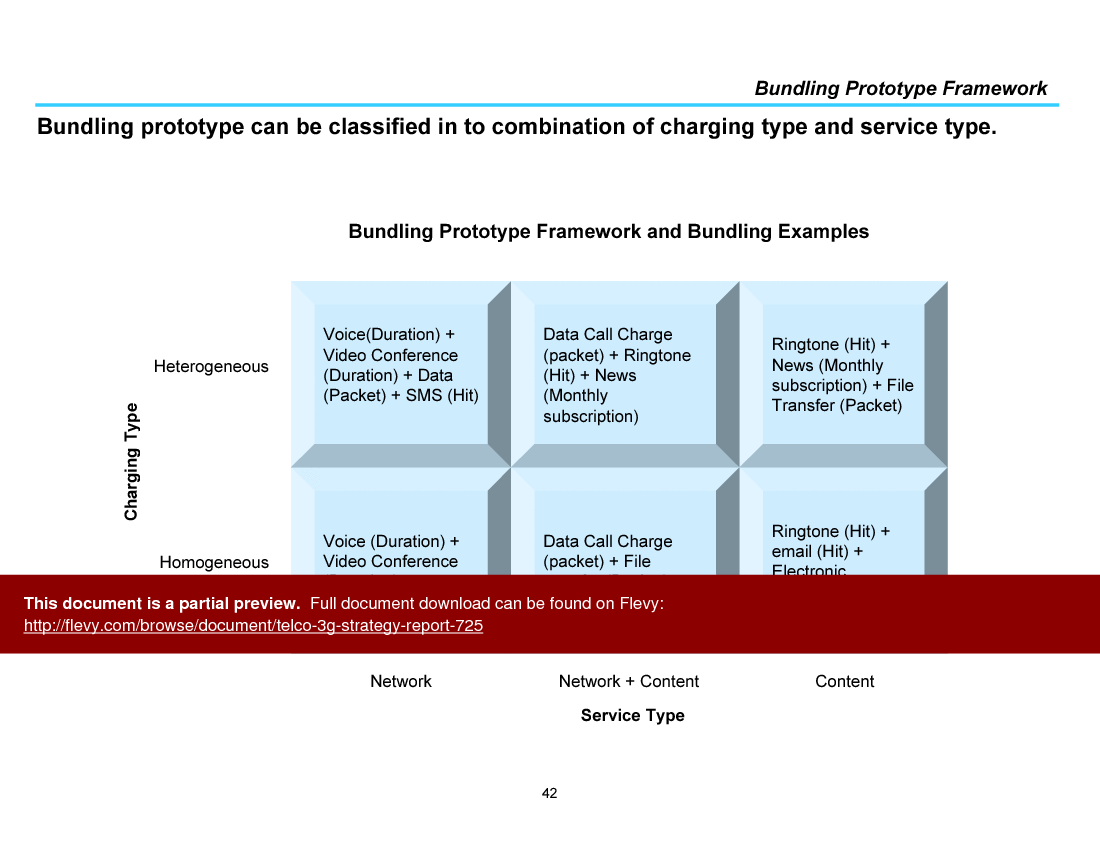
This PPT slide presents a strategic framework for optimizing outcomes in the next generation service market, focusing on customer understanding and behavior modification regarding product offerings and pricing structures. It outlines a predicted pricing scheme, categorized into 3 scenarios: “No retail billing,” “complexity is king,” and “keep it simple.” These scenarios reflect varying levels of customer acceptance concerning diverse charges, indicating that pricing complexity could influence customer willingness to engage with new services.
The right side of the slide emphasizes 2 primary approaches to increase customer usage: depth and scope. Depth refers to increasing the usage amount of specific services, while scope involves expanding the number of services utilized by customers. The slide identifies 5 key strategies to achieve these objectives.
Firstly, “Understand the Customer” emphasizes the importance of grasping customer usage patterns and preferences. Following this, “Obtain Permission” suggests that gaining customers' voluntary attention through incentives is crucial for engagement. The third strategy, “Educate the Customer,” focuses on teaching customers about service usage and pricing schemes over time, which is essential for fostering informed decision-making.
“Maintain and Reinforce Permission” highlights the need for ongoing communication to create anticipation among customers, while “Direct the Customer” aims to shift customer behavior towards more profitable products and services. This structured approach not only seeks to enhance customer experience, but also aims to drive revenue growth by aligning customer behavior with business objectives. The insights provided in this slide are valuable for any organization looking to navigate the complexities of modern service markets effectively.
Strategic Advantages of Billing Outsourcing in Telecom
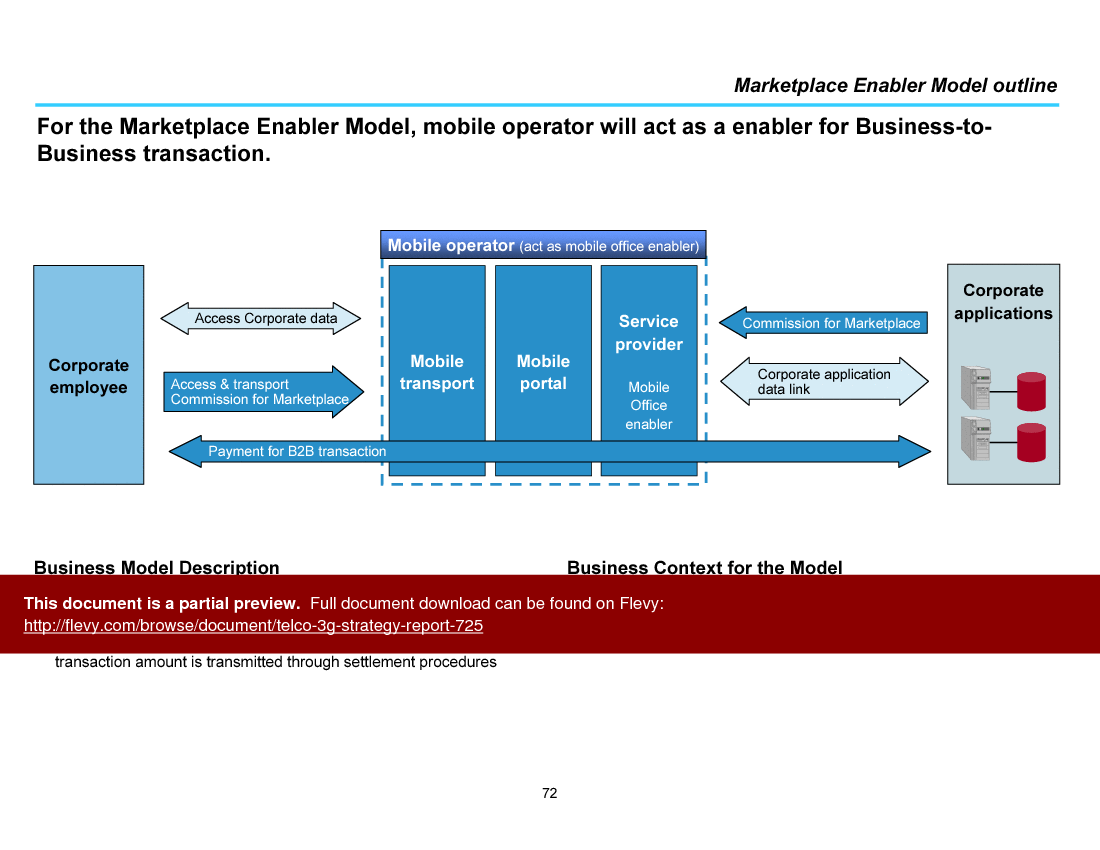
This PPT slide presents a strategic overview of billing outsourcing in the context of both traditional and online commerce. It features a diagram that categorizes payment methods based on transaction size and scope. The horizontal axis distinguishes between large and small transaction amounts, while the vertical axis differentiates between offline and online commerce. Key payment methods highlighted include cash, credit card/account deposits, and e-cash, illustrating their relevance across various commerce types.
The accompanying text outlines several advantages of billing outsourcing, particularly for 3G service providers. It emphasizes that maintaining a sophisticated billing system can be prohibitively expensive, making outsourcing an attractive alternative. By leveraging external resources, companies can avoid significant upfront investments in infrastructure, which can be a barrier to entry for many businesses.
Additionally, the text notes that outsourcing can expedite the launch of new services. By utilizing the capacity of an outsourcing partner, companies can save time on operational aspects, such as system supplementation or capacity extension. This is particularly beneficial for smaller companies that may struggle to develop independent billing infrastructures due to the associated complexities and costs.
Lastly, the slide points out that customer trust can be enhanced by partnering with established outsourcing firms. This reliance on reputable brands can provide a competitive edge in customer acquisition and retention. Overall, the slide effectively communicates the strategic benefits of billing outsourcing, making it a compelling consideration for businesses in the telecommunications sector.
Enhancing Customer Experience with Real-Time Hot Billing

This PPT slide outlines the increasing relevance of the "Hot Bill" billing method in the telecommunications sector, emphasizing its role in enhancing customer convenience and satisfaction. It begins by defining Hot Bill as an irregular billing method that provides customers with real-time or near-real-time billing information upon request. This immediate access to billing details is crucial for customers who prefer to understand their usage based solely on the duration of their calls.
The left section of the slide highlights current usage scenarios for Hot Bill. It notes that uniform price plans based on voice services meet customer needs by allowing them to track usage during calls. Additionally, it mentions situations where Hot Bill is necessary for settlement services and prepaid card transactions, particularly during service cancellations or modifications. The billing process is described as straightforward, suggesting that data can be efficiently saved, which supports the real-time billing function.
On the right side, the slide discusses the necessity of Hot Bill in the context of next-generation services. It points out that the complexity of billing, due to various pricing plans, drives customers to seek accurate, real-time information about their usage fees. Furthermore, it highlights that when customers request specific service usage details, this information can be directly sent to their handsets, thus meeting their needs more effectively. The slide concludes with a note on the emergence of various complex billing information, indicating a trend toward more differentiated pricing strategies based on service usage metrics such as total amount, frequency, and volume. This suggests a shift towards more personalized billing experiences that cater to diverse customer preferences.
Strategic Insights on 2G to 3G Number Mobility

This PPT slide discusses the transition from 2G to 3G mobile networks, focusing on the role of Mobile Identification Number (MIN) mobility. It suggests that MIN mobility can serve as a facilitator for integrating 3G services, particularly when users switch between networks with varying capabilities. The slide emphasizes the classification of number mobility into 3 categories: location mobility, operator mobility, and service mobility.
The central theme revolves around the challenges and considerations associated with number mobility during this transition. It highlights that countries already implementing number mobility will likely have an advantage when launching 3G services. The visual representation of mobility issues between 2.5G (GPRS) and 3G (WCDMA) networks illustrates potential billing complications that arise when users switch between these networks while using voice or data services.
Billing issues are noted to stem from the "hands off" point between networks, where separate billing rates may apply. This can lead to confusion and complications in data production. The slide also raises concerns about simultaneous voice and data usage on 3G networks, which may exacerbate these billing issues when users move into areas with lower network capabilities.
The implications of introducing number mobility are significant, suggesting that a robust system is necessary to manage transitions across different network stages effectively. The slide serves as a critical reminder of the complexities involved in mobile number management during technological upgrades, urging stakeholders to consider these factors in their strategic planning.
Architecture of Individual User Context Management Solution

This PPT slide presents an overview of a billing solution architecture focused on individual user context management. It highlights the integration of various components that facilitate personalized service offerings based on user interactions. The central element is the "Context Management" module, which acts as a hub for processing requests and recommendations.
At the top, the SMS Gateway is depicted as a key entry point for user interactions, where users can request SMS communications. This functionality is linked to the AAA Content Management Gateway Module, which manages incoming requests and triggers service activations and recommendations. The flow of information is clearly illustrated, showing how user requests lead to specific actions within the system.
The slide also outlines several content databases (Content DB 1 to Content DB 4), indicating that diverse content can be accessed and utilized for personalized recommendations. This suggests a robust backend capable of supporting various user preferences and behaviors.
Further down, the AAA Order Module is detailed, which includes critical functions like rating, revenue assurance, and invoicing. This indicates a comprehensive approach to managing user transactions and ensuring accurate billing based on the services rendered.
The presence of BBB personalization modules and additional localization functions emphasizes the solution's adaptability to different user contexts and regional requirements. This architecture is designed to enhance user experience by providing tailored services, ultimately driving customer satisfaction and loyalty.
The slide serves as a valuable reference for organizations looking to implement or enhance their billing solutions with a focus on personalized user engagement and effective revenue management.
Customizing Price Plans for Diverse Customer Segments

This PPT slide presents a framework for designing price plans tailored to different customer segments within a telecom context. It illustrates how various pricing strategies can be structured to meet diverse consumer needs. The graph shows multiple price plans, labeled A, B, C, and D, plotted against cost, with distinct slopes indicating different pricing strategies.
The key takeaway is that price plans can be customized to target specific customer segments effectively. By adjusting the subscription amounts and the slope of each plan, businesses can create a range of pricing options that appeal to various market segments. This flexibility allows for a more nuanced approach to pricing, enabling companies to cater to both high-value and budget-conscious customers.
The slide also emphasizes that these price plans are applicable for both voice and data services, indicating a comprehensive strategy that spans different telecom offerings. This dual applicability enhances the relevance of the pricing models, making them versatile for a broader audience.
Understanding this framework can help executives make informed decisions about pricing strategies that align with their overall business objectives. It highlights the importance of segmentation in pricing, suggesting that a one-size-fits-all approach may not be optimal. Instead, a tailored strategy can lead to better customer satisfaction and potentially increased revenue streams.
|
|
"I have used Flevy services for a number of years and have never, ever been disappointed. As a matter of fact, David and his team continue, time after time, to impress me with their willingness to assist and in the real sense of the word. I have concluded in fact ... [read more] that it is not at all just a repository of documents/resources but, in the way that David and his team manage the firm, it is like dealing with consultants always ready to assist, advise and direct you to what you really need, and they always get it right.
"
I am an international hospitality accomplished senior executive who has worked and lived during the past 35 years in 23 countries in 5 continents and I can humbly say that I know what customer service is, trust me. Aside from the great and professional service that Flevy's team provide, their wide variety of material is of utmost great quality, professionally put together and most current. Well done Flevy, keep up the great work and I look forward to continue working with you in the future and to recommend you to a variety of colleagues around the world. – Roberto Pelliccia, Senior Executive in International Hospitality
|
|
|
"One of the great discoveries that I have made for my business is the Flevy library of training materials.
As a Lean Transformation Expert, I am always making presentations to clients on a variety of topics: Training, Transformation, Total Productive Maintenance, Culture, Coaching, Tools, Leadership Behavior, etc. Flevy ... [read more] usually has just what I need to make my point.
"
It is well worth the money to purchase these presentations. Sure, I have the knowledge and information to make my point. It is another thing to create a presentation that captures what I want to say. Flevy has saved me countless hours of preparation time that is much better spent with implementation that will actually save money for my clients. – Ed Kemmerling, Senior Lean Transformation Expert at PMG
|
|
|
"I like your product. I'm frequently designing PowerPoint presentations for my company and your product has given me so many great ideas on the use of charts, layouts, tools, and frameworks. I really think the templates are a valuable asset to the job."
– Roberto Fuentes Martinez, Senior Executive Director at Technology Transformation Advisory
|
|
|
"As a consulting firm, we had been creating subject matter training materials for our people and found the excellent materials on Flevy, which saved us 100's of hours of re-creating what already exists on the Flevy materials we purchased."
– Michael Evans, Managing Director at Newport LLC
|
|
|
"[Flevy] produces some great work that has been/continues to be of immense help not only to myself, but as I seek to provide professional services to my clients, it gives me a large "tool box" of resources that are critical to provide them with the quality of service and outcomes they are expecting."
– Royston Knowles, Executive with 50+ Years of Board Level Experience
|
|
|
"FlevyPro has been a brilliant resource for me, as an independent growth consultant, to access a vast knowledge bank of presentations to support my work with clients. In terms of RoI, the value I received from the very first presentation I downloaded paid for my subscription many times over! The ... [read more] quality of the decks available allows me to punch way above my weight – it's like having the resources of a Big 4 consultancy at your fingertips at a microscopic fraction of the overhead. "
– Roderick Cameron, Founding Partner at SGFE Ltd
|
|
|
"My FlevyPro subscription provides me with the most popular frameworks and decks in demand in today’s market. They not only augment my existing consulting and coaching offerings and delivery, but also keep me abreast of the latest trends, inspire new products and service offerings for my practice, and educate me ... [read more] in a fraction of the time and money of other solutions. I strongly recommend FlevyPro to any consultant serious about success. "
– Bill Branson, Founder at Strategic Business Architects
|
|
|
"As a small business owner, the resource material available from FlevyPro has proven to be invaluable. The ability to search for material on demand based our project events and client requirements was great for me and proved very beneficial to my clients. Importantly, being able to easily edit and tailor ... [read more] the material for specific purposes helped us to make presentations, knowledge sharing, and toolkit development, which formed part of the overall program collateral. While FlevyPro contains resource material that any consultancy, project or delivery firm must have, it is an essential part of a small firm or independent consultant's toolbox. "
– Michael Duff, Managing Director at Change Strategy (UK)
|
